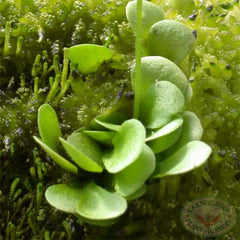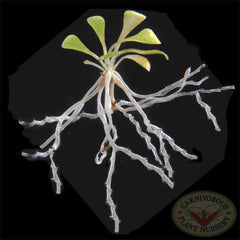
Growing Tips for Genlisea



Genlisea-Corkscrew Plant
Soil: 4:1 peat:sand.
Container: 3" plastic pot.
Watering: moist to very wet.
Light: full to part sun to dappled light.
Temperature: tropical.
Humidity: medium to high.
Location: terrarium or greenhouse
Dormancy: No.
Habitat
Genlisea are tropical carnivorous plants, that are similar to terrestrial bladderworts, and grow in typical Carnivorous Plant conditions of sunny, very wet, peaty soil, or sandy seeps, all of which are nutrient poor. They grow in very wet conditions, often submerged for several weeks. Temperatures are generally consistent year round 68-90°F (20-32°C). They mostly grow in acidic, waterlogged, loose, peat or quartz sand. They frequently grow in association with Sphagnum Moss. Common companion Carnivorous Plants are Drosera and Utricularia, as well as yellow eyed grasses and clubmoss.
Culture
Genlisea thrive in a standard Carnivorous Plant soil mix of 1 part sand and 1 part peat. Though the sand-peat ratio is not critical, most prefer a more peaty mix, and some prefer live sphagnum moss. Use mineral-free water and keep the soil very wet. The tray method works very well. Stand the pot in a tray or saucer and keep the water at surface level at all times during the growing season. Most Genlisea prefer full sun, but can tolerate shade. Some prefer indirect, low level light. They do quite well at room temperature, but a few prefer very warm conditions. They grow best in terrariums or warm greenhouses.
Propagation
Genlisea can be propagated from leaf cuttings that root easily in water. Seeds are slow and need steady conditons. Tissue Culture works well for clones.
Dormancy
Genlisea are tropical carnivorous plants and do not require dormancy.
Feeding
Genlisea traps are underground and quite small. Their common “foods” are protozoa, typically Paramecia. They do a marvelous job of attracting and catching prey all on their own. It is troublesome, difficult and unnecessary to feed them.
Other Considerations
Genlisea are generally grown for their curiosity. Their flowers are small, but can provide a lovely display. Several different species can be grown together.
They will readily propagate from “root division.” Simply dig out a small portion of the plant and repot it in fresh, wet soil.
Repot every few years in a fresh Carnivorous Plant soil mix, since the peat breaks down and can create poor drainage. This is a good time to divide the plant.
